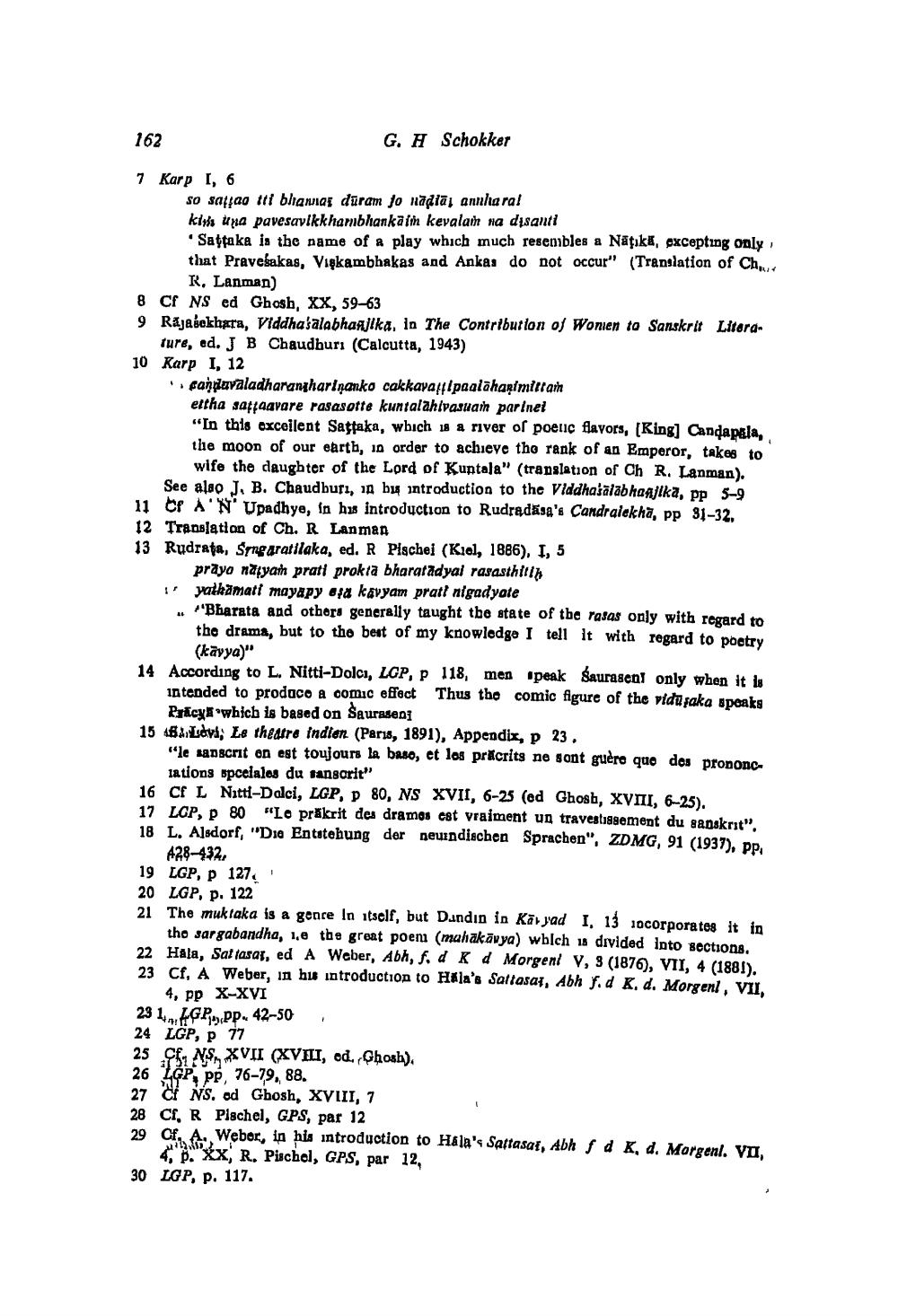________________
162
G. A
Schokker
7 Karp I, 6
so safjag iti blamiai duram jo nadiāj analaral kisha una pavesavikkhambhankalm kevalan na disanti
Sattaka is the name of a play which much resembles a Nātika, excepting only that Praveśakas, Viękambhakas and Anka, do not occur" (Translation of Chi
R, Lanman) 8 Cf NS ed Ghosh, XX, 59-63 9 Rajabokhara, Viddha'alabhanjika, in The Contribution of Wonien ta Sanskrit Litera
ture, ed. J B Chaudhurı (Calcutta, 1943) 10 Karp I, 12
fanpavaladharanghariņanko cakkavafipaalaharimittar ettha saffaavare rasas otte kuntalahtvasuar parlnel "In this excellent Sattaka, which is a river of poelic flavors, (Ring] Candapala, the moon of our earth, in order to achieve the rank of an Emperor, takes to
wife the daughter of the Lord of Kuntala" (translation of Ch R. Lanman). See alao J, B. Chaudhuri, in bu introduction to the Viddhašalabhaajika, pp 5-9 11 CPA'N' Upadhye, in his introduction to Rudradāsa's Candralekha, pp 31-32. 12 Translation of Ch. R Lanman 13 Rudrata, Srgaratilaka, ed. R Plachei (Kiel, 1886), 1, 5
prayo nayath prati prokta bharatadyai rasasthitin 1' yatkamati mayapy sa kavyam prati nigadyate .. 'Bharata and others generally taught the state of the rasas only with regard to
the drama, but to the best of my knowledge I tell it with regard to poetry
(kāyya)" 14 According to L. Nitti-Dolcı, LGP, P 118, men peak Saurasen only when it is
intended to produco a comic effect Thus the comic figure of the vidu saka speaks
Ralicy which is based on Sauraseni 15 Baldva, Le theatre indien (Paris, 1891), Appendix, p 23
"le uanscrit en est toujours la baso, et los prácrits ne sont guère que des prononc
lations spccialos du fansorit" 16 CF L Nitti-Dalci, LGP, D 80, NS XVII, 6-25 (od Ghosh, XVII, 6-25). 17 LOP. p 80 "Lo prakrit des dramos est vraiment un travestissement du sanskrit". 18 L, Alsdorf, "Die Entstehung der neuindischen Sprachen", ZDMG, 91 (1937), pp.
A28-432 19 LGP, P 127 20 LGP, p. 122 21 The muktaka is a gence In itself, but Dandin in Kayad I, 13 ocorporates it in
tho sargabandha, 1e the great poeni (mahakāvya) which is divided into sections. 22 Hala, Sat tasar, ed A Weber, Abh, f. dKd Morgeni V, (1876, VII, 4 (1881). 23 Cf. A Weber, in his introduction to Hila's Saltasar, Abh y.dk, d. Morgenl. VII.
4, pp X-XVI 23 1,, AGP PP. 42-50 , 24 LGP, P 17 25 C, NSXVII (XVII, od. Ghosh). 26 LGP, PP, 76-79, 88.
Cf NS. od Ghosh, XVIII, 7
Cf, R Pischel, GPS, par 12 29 Cf. A. Weber, in his introduction to Hala's Sattasaf, Abh f d K, d. Morgenl. VII,
4, p. XX, R, Pischel, GPS, par 12, 30 LGP, p. 117.




